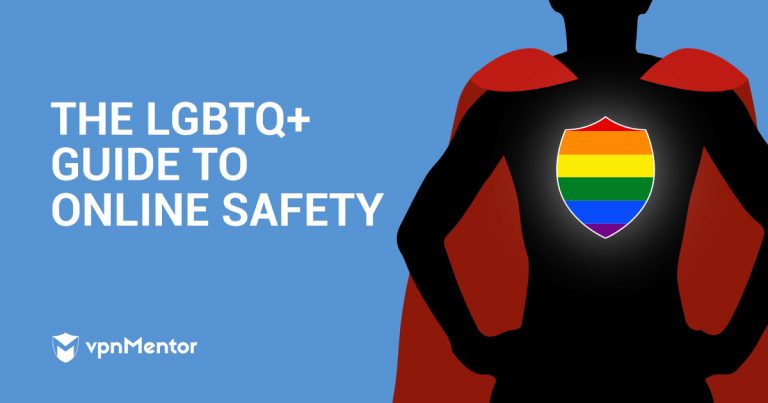Most LGBTQ are Cyberbullied. Here’s How to Stay Safe Online
We at vpnMentor conducted a survey in which we asked 695 LGBTQ+ people worldwide about their experiences online as they relate to their sexual orientation and gender identity. The results – referenced throughout this article – illuminated the unique challenges faced by the LGBTQ+ community.
73% of all respondents in all categories of gender identity and sexual orientation have been personally attacked or harassed online.
50% of all respondents in all categories of gender identity and sexual orientation have suffered sexual harassment online.
When it comes to sexual orientation, asexual people feel the least safe online, and gay men the safest.
When it comes to gender identity, transgender women feel the least safe online, and cisgender men the safest.
Transgender women are the most likely to be outed against their will online, while cisgender men are least likely.
As experts in the field of cybersecurity, it is our mission to provide practical strategies for coping with adversity, bigotry, and abuse on the web, which is why we created this guide.
Whether you are part of the LGBTQ+ community or are an ally, we hope you find this guide helpful.
Navigating a heterosexual and cisgender society can be difficult for members of the LGBTQ+ community. Alienated from their family, condemned by their community, and isolated from their friends, many LGBTQ+ people turn to the internet for solidarity.
With just the click of a button, they can escape their physical surroundings and immediately be transported to a place filled with like-minded, accepting people. There, they can seek guidance about coming out, ask questions about queer specific topics, and better understand their sexualities and gender identities.
Simply put, the internet facilities a sense of community among LGBTQ+ people, regardless of their physical proximity to one another.
“The internet and social media are essential to connecting individuals to information and people of the LGBT+ community,” states Mara,* who’s bisexual/pansexual.** “[It provides] spaces for them to find acceptance, community, and support. It is extremely important to keep these connections alive.”
Since the suicide rate for LGBTQ+ youth is substantially higher than that of their heterosexual and cisgender peers, the internet can literally become life-saving.
“There are so many wonderful support groups that help so much, they seriously saved my life and made my search for my identity so much easier,” recounts Mariela, a lesbian.
“[The internet is] definitely a great information sharer for our sometimes disjointed community, especially in rural areas,” says Blair, who’s genderqueer/non-binary.*** “Lots of my trans identity was discerned through language I accessed online as well as looking at other trans narratives online.”
Cyberbullying is a Near Universal Experience According to our study, 73% of LGBTQ+ people have reported being personally attacked or harassed online. These incidents frequently revolve around attempts to alter or criticize a person’s sexual or gender identity. (
Click to share on Facebook)
Shauna, a lesbian respondent recalls, “some lady commented on a post I made on social media that my being gay was a phase and that if I found Jesus, I would be converted just like her.”
“Back before Facebook filtered messages from people you aren’t friends with, I would often receive messages calling me a dyke or similarly abusing me,” adds Dylan, a non-binary respondent.
And the abuse isn’t always just verbal. Sometimes, it can even lead to physical violence. According to Zsófia, a genderqueer/non-binary lesbian living in Hungary, “In 2012, my whole Facebook profile was published (with several other [members of the] Hungarian LGBTQ+ community) on a far-right group’s website. The list was called “fagot-list” (“köcsög lista” in Hungarian).”
In addition to these assaults by bigots and religious and political extremists, we found that most of the online harassment respondents experienced was sexual in nature.
“I’ve gotten dick pics when looking for a roommate or when posting my phone number after my cat went missing. I’ve also been told by a few guys’ [that] bisexuality is a phase and I need a good dick to cure me,” explains a Jamie, who’s non-binary and bisexual.
Jamie’s sentiment was echoed throughout the survey, with dozens of people reporting that they have received unsolicited pornographic photos or vulgar, sexually explicit messages.
“I posted a photo saying I wish I could just keep my mouth shut, and multiple people offered their dick to keep it full,” recounts Tamika, a genderqueer lesbian.
“I have had death threats against myself and my family,” discloses Nova, an asexual transgender woman. “Bullying from outside and inside the community. [I’ve] been creeped out so much that I have left social media.”
Asexual people described feeling threatened by their non-asexual counterparts who refuse to accept asexuality as a valid orientation. Some of these men, women and non-binary or genderqueer people would accuse asexuals of having a latent or “not yet developed” sexual interest.
“People think they can cure my asexuality by sending me their nudes or just repeatedly telling me everyone has a sex drive you just need to wait for yours,” says Elijah, who’s genderqueer and asexual.
Despite reporting frequently receiving sexually inappropriate content or comments, many respondents downplayed their harassment and even excused this behavior as “just the usual.”
But you don’t have to accept “just the usual.” There are ways to filter out the abuse.
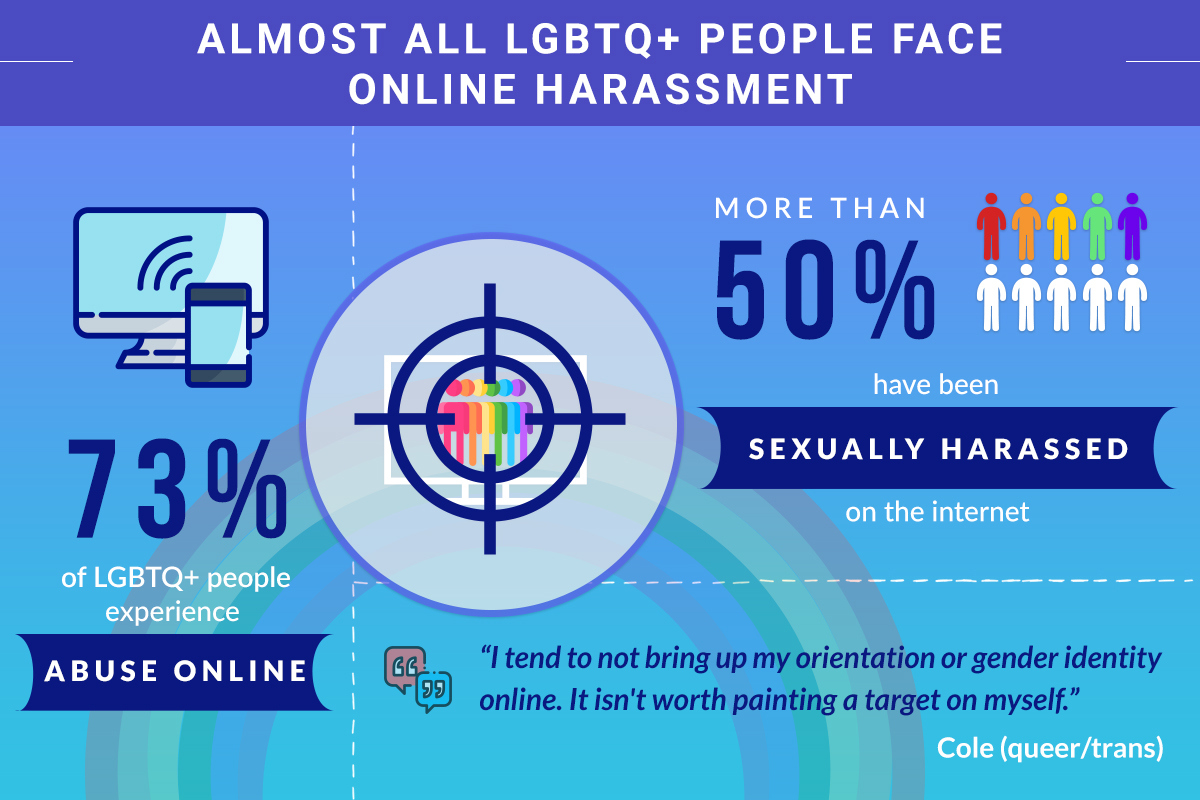 Cyberbullying on Social Media
Cyberbullying on Social Media Today social media is our main form of communication on the internet, and for LGBTQ+ people – especially those who are not supported by their families or friends – social media may be the only place they can find a loving, supportive community.
Unfortunately, social media is also rife with bullying. Studies have even shown that, due to the fact that not having to face their victim in person emboldens many abusers, bullying is much more widespread online than in real life.
Research has also shown that cyberbullying causes depression, and many victims turn to unhealthy coping mechanisms such as drugs, alcohol, and self-injury.
While there is no way for individuals to stop the harassers from bullying in the first place, there are ways to shield yourself from them, making the repercussions of cyberbullying less severe.
Sometimes it’s as simple as blocking and reporting abusive users, so you don’t have to interact with them at all.
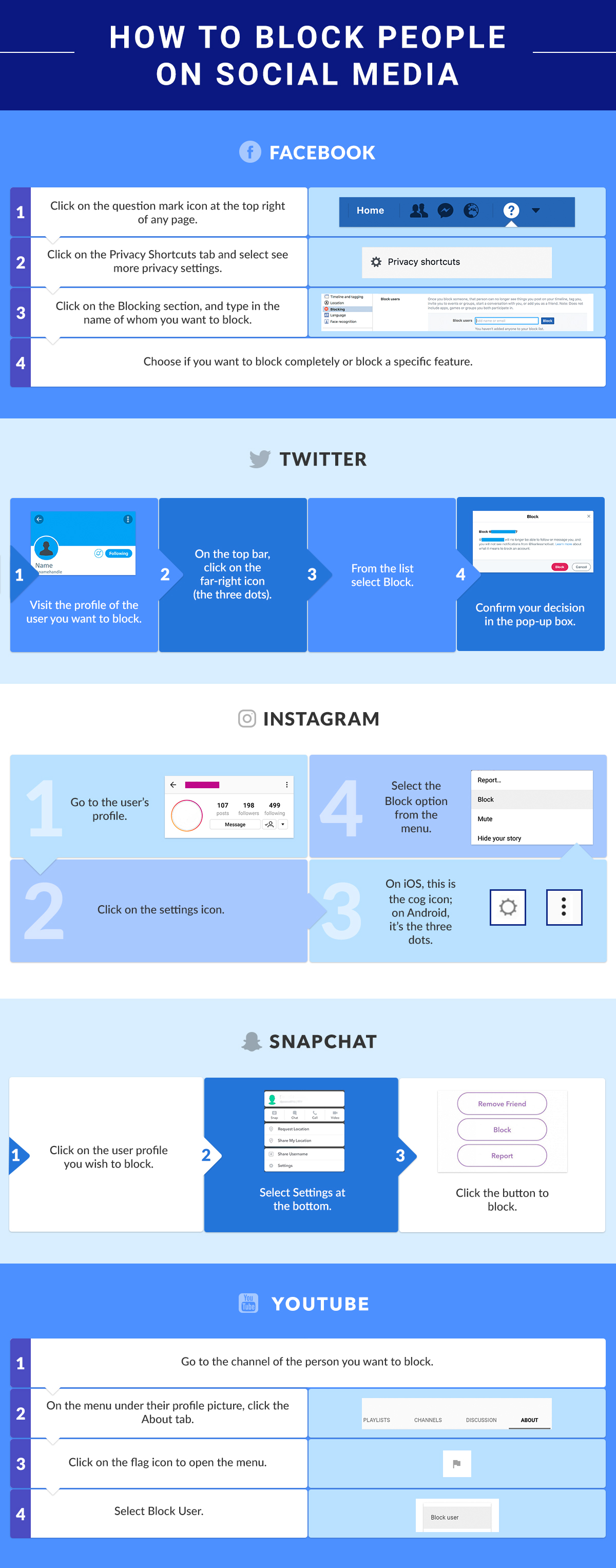
If problems persist, you also have the option of reporting the abuse to the platform – though unfortunately, site administrators don’t always take the necessary action to shut bigots down.
Other Ways to Silence Haters When blocking someone online is not an option, there are other steps you can take to limit your exposure to them. Any of the following tactics can help you take control online:
Manually remove comments on your posts.
Most sites allow you delete specific comments, so you can remove the offensive responses quickly.
Report the incident to the platform.
If you don’t want it to be obvious that it was you who took action, reporting allows you to anonymously flag the issue, so the company can take action.
Closeted People Risk Being BlackmailedAlthough more and more people are comfortable coming out of the closet, there are still many who unfortunately do not feel safe enough to do so. And there are cyber criminals out there who are ready to take advantage of that and are actively looking for victims to blackmail and extort. Therefore, it is important to know how to keep certain information private if you so choose.
Most online platforms have started to take privacy seriously and offer settings to hide parts of, or all, profile information from some users.
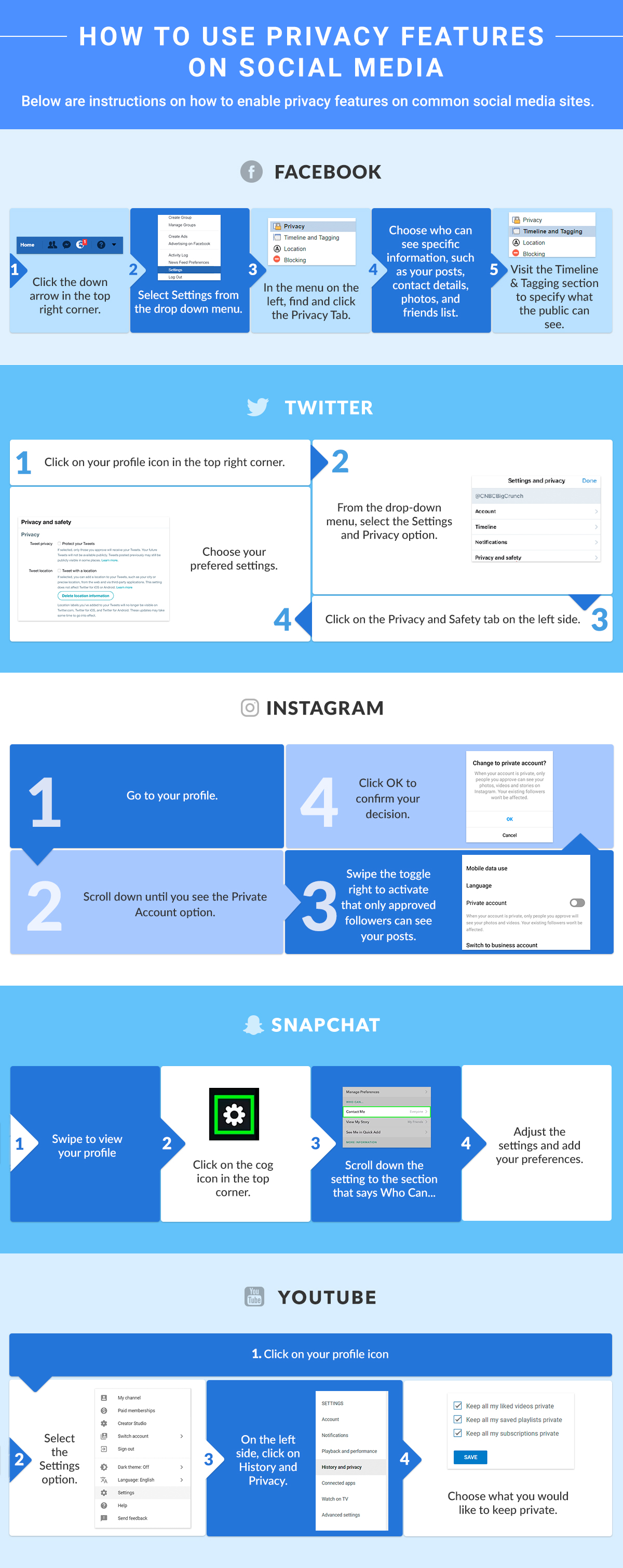
Controlling Your Identity During and After Transition
For many transgender people, the period of transition can be an extremely vulnerable time. For those who prefer to keep some or all of their transition private, the possibility of being outed is one of the biggest threats to their online safety. In fact, 26% of transgender women and 21% of transgender men report having been outed against their will.
Some of the respondents to our survey shared stories about how their friends and classmates maliciously revealed their gender identity on social media platforms – or even blackmailed them.
According to Dante, a bisexual/pansexual trans man, “The person [blackmailing me] said they will share my personal information (gender identity and sexual orientation) if I [didn’t] do some certain things.”
In order to avoid being outed, which could potentially create a hostile family dynamic, cost them their job, or instigate a barrage of hateful messages, many choose to live in secrecy.
As Jolene, a transgender lesbian woman recalls, “I live stealth. I hide my sexual orientation and gender identity online.”
Because most people transition as adults, they very likely have an online presence that presents them with the gender they were assigned at birth. As a result, those who fear being blackmailed or involuntarily outed will often choose to remove their previous identity from the web.
For instance, Bianca, a trans blogger, created an online community where she was able to help others in the same situation as her. However, it eventually led to an inability to secure employment and feed her child. According to her, “Then came reality. The world does not like trans – does not understand the cause or the effect.” Because of this, she made the decision to remove traces of her trans identity from her online presence.
Similarly, Yahel, who’s a trans man, first came out in an online forum he worked for, and was immediately met with harassment: “They started opening topics about me saying I’m a girl and that I have a mental illness; they used ‘she’ pronouns.”
Fortunately, because he was a staff member, he could block the offending users.
However, he also noted the limits to his abilities, observing, “when I left my position as a staff member in order to focus on my grades at school, the harassment continued, and I couldn’t do anything about it. When I reported it, no one did anything about it.”
If you are in a similar situation, and are afraid of the consequences of exposing your assigned gender or transition, you have the option of modifying your online persona.
How to Reinvent Your Online Identity
Delete your social media accounts and create new ones that reflect your true gender. Start posting more photos, so you have memories to pad it out with!
Contact websites that present you with your assigned gender, and ask them to remove or update their information on you – you can find out what’s on the web by Googling yourself.
If you don’t want to take these steps because you’ll lose your online following or contact list, you could just update your current accounts.
If you changed your name, update it on every account.
Delete or untag old photos from your social media accounts.
Contact websites, friends, and followers to delete or untag any images that you can’t untag yourself.
Create new photos, videos, and posts that reflect your true self.
It’s also good to know that some social media platforms, like Facebook, have the option to choose a custom gender.
Fortunately, with greater trans visibility, more and more people are open about and proud of their journey. Alex is a trans woman, who found it was easy to come out online. According to her, “Changing my identity online was very simple for me mainly because I already surrounded myself with supportive people. So, like, when I did change everything, everyone was already on board.”
Although she did experience some hate – particularly on dating sites – by being open and finding support among her friends, she found it easier to filter out the noise. Furthermore, she chose the keep posted photos that presented her with the gender she was assigned at birth, and even said that it seemed to help her parents adjust to the idea of her transition.
The decision about how open to be online is deeply personal, and no one should be pressured to reveal more or less than they feel comfortable with. You should decide what’s best for you.
Dating While Queer Online dating is a huge part of modern relationships. Apps, dating websites, and social media all provide a platform for folks of any gender or orientation to meet, hook up, or fall in love. And they can be especially helpful for sexual minorities looking to find partners in a largely cis-hetero world.
Many of the people we interviewed who are in happy, long-term relationships met their partners on the web.
Ronnie found the love of her life online. “Once I decided to just talk to someone who I had judged was way out of my league. After a couple of weeks she asked me on a date […] now 6 months later, I’m so unbelievably in love.”
Unfortunately, however, online dating sites can be hives for sexual harassment.
In the survey we conducted, more than 50% of respondents who identify as gay, lesbian, queer, asexual, or bisexual/pansexual suffered sexual harassment online.
Similar studies revealed that sexual harassment affects a third of LGBTQ youth – four times as many as cis-hetero youth.
That’s why it’s so important to protect yourself online. Dating should be fun. In order for it to stay that way, check out the tips below.
Safety Tips for Online Dating
Meeting someone you first connected to online could potentially be risky. Even if they appear legitimate, there’s no way to guarantee the authenticity of their identity, and – even if they are the person they say there are – you don’t know how they might act or behave in a face-to-face encounter.
While this shouldn’t stop you from meeting new people, it’s important to maintain a strategy to staysafe, should the situation take an unwanted turn.
Don’t meet at home because you don’t want strangers to know where you live until you’ve vetted them. It may seem inconvenient, but it will make you much less vulnerable.
Tell a friend all the details of the arrangements, including who you’re meeting, where you’re meeting, and when you should be back.
‘Ask For Angela’ or use a similar scheme. Across the world, codes exist that allow you to discreetly ask for help at bars or restaurants should you feel unsafe during a date. Research the options used in your locale beforehand.
Use police apps such as SafeTrek (see below), which allow you to notify the police of your location and alert them to danger, without having to make a call. By pressing a single button, you can dispatch authorities without your date knowing.
Do your research before you meet. Most people have an extensive social media presence that you can use to validate their identity. If they don’t, then you know to be extra cautious during your date – or you might decide to skip the meeting altogether.
Safe Dating Apps As more and more people rely on their smartphones, dating apps have largely taken the place of traditional dating websites. Some of these attract users who are looking to just hook up (and if that’s what you want, great!), while others are geared more towards those looking for long term relationships.
In either case, users are vulnerable to the same dangers, including sexual harassment or assault.
Fortunately, there are a plethora of apps designed to make your dating experience safer. These include online dating platforms with built-in security measures, as well as intuitive programs that can track your safety while you’re out.
Taimi: Cited as the biggest and safest dating app for men seeking men, Taimi lets users “make friends, find the perfect guy, or form meaningful relationships.” It uses secure login features, such as fingerprints and two-factor authentication, and has an AI bot to verify accounts and detect fraudulent users.
LGBTQutie: This simple app promotes cultivating meaningful relationships and friendships, rather than impersonal hookups. It’s aimed at inclusivity, supporting asexual, non-binary, pansexual, and intersex users, alongside other LGBTQ members.
Scissr: Catering specifically to lesbians, Scissr promises to be a safe space for women. It prioritizes finding fake profiles by weeding out and deleting them before they can cause problems. Alongside its dating service, it also offers users a community where they can share and discuss different topics with likeminded people.
Chappy: Chappy aims to change the stigma around gay-dating apps. They require each user to verify themselves via Facebook and they auto-delete any pictures that do not include a face. They also require users to each select one another before any messaging can happen, which significantly reduces the chance of harassment. Furthermore, they’ll alert you if anyone tries to screenshot your profile or photos.
Safe Sexting
With the rise of dating apps, sexting has become a common phenomenon. As a result, many have nude pictures stored on their phones.
Whether you take these pictures for yourself or for others, you can’t ignore the possibility that if they fall into the wrong hands, the result could be embarrassing – or in some cases – have devastating effects on your personal or professional life.
But swapping cheeky photos can be a fun and fulfilling part of your romantic life, and we want you to have fun. Just make sure you take precautions.
Apps to Secretly Store Your Photos There are certain apps that you can use to increase security and store your intimate photos in a locked part of your phone. The following all provide this feature:
KeepSafe: KeepSafe provides an easy way to protect your pictures. Just transfer your intimate photos into the app, and it will lock them with a password.
Gallery Lock Lite: This app is a locked photo vault. It also features a stealth mode, which hides the app icon altogether – you can then only access it through a specific sequence of key commands.
Best Secret Folder: This privacy app allows you to hide the app (and your photos) entirely, as it appears on your phone as a ‘Utilities Folder,’ which diverts any suspicion as to what it contains.
KYMS: KYMS provides the standard locked album features but takes it a step further by appearing as a calculator on your phone’s menu. As long as no one grabs your phone to do some math, your secret photos will remain hidden.
Vaulty: As well as providing your photos protection, Vaulty also comes with a plethora of editing features. Plus, if you lose your phone, you can restore your pictures from another device.
Have Your Photos Self-Destruct Often no real need exists to store your nude photos on your phone at all. Once you’ve sent them to the desired recipient, you may not have a use for them. Many apps exist that allow you to take and send pictures, but will automatically delete them from both phones after a certain amount of time. These platforms allow genuinely stealthy sexting:
Snapchat
StealthChat
Wickr
Kaboom
BurnChat
However, be aware that there are ways to get around this – meaning that the recipient of your photos could take a screenshot or save them in some other way. So never sext with someone you don’t trust.
How to Not Get Hacked
Unfortunately, it’s not just physical theft that could expose your private photos and information. Hackers are becoming incredibly sophisticated and can find your intimate information without you even knowing it.
The best way to protect yourself from hackers is to implement several layers of online protection.
Install antivirus software that will alert you if you accidentally download spyware onto your phone. Spyware intercepts your files, passwords, and online activity, and transfers them back to the hacker.
Only download apps from trusted users. Some unofficial apps are trojan horses for malware. If an infected program enters your phone, it can easily grant a third party access to your messages and photos.
Regularly update your apps, since updates usually include patches and fixes for security flaws.
Use two-factor authentication (2FA) on all your accounts to make it more difficult for cybercriminals to access your files via brute-force attacks. This setting requires an additional code from a third-party platform, like your SMS or email, so (unless someone has managed to hack into several of your accounts) they won’t be able to gain entry.
Always use a VPN when using unsecured public WiFi networks. Open hotspots do not encrypt data, so other users can see and access your files. Rogue connection points also exist to intentionally farm your data. Using a VPN will encrypt your traffic and bypass this issue altogether. If you’re not sure which to use, here are some of
our favorites.
Avoiding Unwanted Advances
Unwanted sexual advances, from illicit photos to sexual requests, can happen to anyone. However, LGBTQ+ people often face specific perils.
For instance, if you’re trans, it’s not uncommon to be bombarded by intimate questions about your genitalia and sexual experiences, or be solicited for paid intercourse.
According to our survey, when comparing the experiences of people with different gender identities, transgender women felt the least safe online, and cisgender men felt the safest. It was also revealed that transgender people are frequently fetishized due to their gender. Many have the experience of being asked to expose themselves to their cis peers under the guise of learning about their transitions.
Dean, a transgender man recalls, “A high school classmate asked to see me naked so he could understand trans people… even after I told him to research on his own. Then he started making sexual advances.”
Similarly, lesbian couples might receive unwanted advances from straight men that have fetishized their relationships, and bi women are often perceived as being hypersexual and open to any sort of encounter.
“Usually it’ll be an ignorant ‘Want to be in a threesome?’ kind of sleazy comment,” said Priya, who’s bi.
Hannah, also a bisexual woman, noted the existence of ‘unicorn hunters,’ on platforms like Tinder. She defined them as “people who search for bi girls to have threesomes with,” and gave an example from her own experience:
“The one that stuck in my head the most was this email I got from a joint profile. They were looking for a girl to have a threesome [with], and I apparently checked all the boxes they were looking for. The email was really polite actually, asking if I’d be into it and if I’d want to meet up.”
However, she was acutely aware of the lack of social niceties and small talk before the offer, and it left her feeling slightly dehumanized.
It’s important to note that not all uncomfortable interactions rise to the level of harassment. Especially on dating sites, where many are looking for a hook-up, what might feel like crossing a boundary to one person could be a welcome proposition to another. If the interaction falls into that gray area, you’re going to have to make a call as to how to deal with it.
Also remember that it’s not your job to educate people if you don’t want to. While it’s true that some act from a place of ignorance, rather than malice, helping them see the light requires the type of emotional labor you don’t owe anyone.
With that in mind, here are some steps you can take for various scenarios in which you are made to feel uncomfortable:
If you do choose to engage, inform the problematic person that they’re causing offense and explain how. Who knows, they might see the error in their ways and apologize for having crossed a line.
If they’re being totally rude and unacceptable, but you still want to respond in some way, you can tell them that if they continue their behavior you’ll report them to the platform. Sometimes a simple threat is enough to make online trolls step down.
If you’re not interested in a discussion, just block their account and report them to the platform through which you’re communicating.
If harassment persists or escalates, and you fear for your safety, report them to the police. While the authorities often don’t adequately respond to online harassment, it may be worth a shot, and reporting an incident at least begins an official paper trail that may become useful down the road.
Navigating the Workplace While Queer
Despite growing visibility and acceptance, some LGBTQ people still face discrimination in the workplace.
In the US, in 28 states, it’s still legal to fire someone based on their sexual orientation, and termination due to gender identity is still allowed in 30 states.
“I’m worried my sexual identity being in the open could hurt my future career,” exclaimed Courtney, a bisexual woman.
These figures are truly shocking, but they highlight why it’s so important to know your rights.
Connecting with Colleagues on Social Media
By no means should anyone ever feel pressured to stay in the closet. That said, those who fear harassment or discrimination should know how to keep their personal and professional life separate if they so choose.
But what if a coworker friends you on Facebook or follows you on Instagram? Do you block them or ignore their request, potentially leading to an awkward work dynamic, or even confrontation?
If you do feel pressured into a friendship with anyone you’re not comfortable with, there are ways to filter what they see. Most platforms let you customize who can see each post, so you can vary the information you share with certain people. Here’s how to do this on popular social network sites:
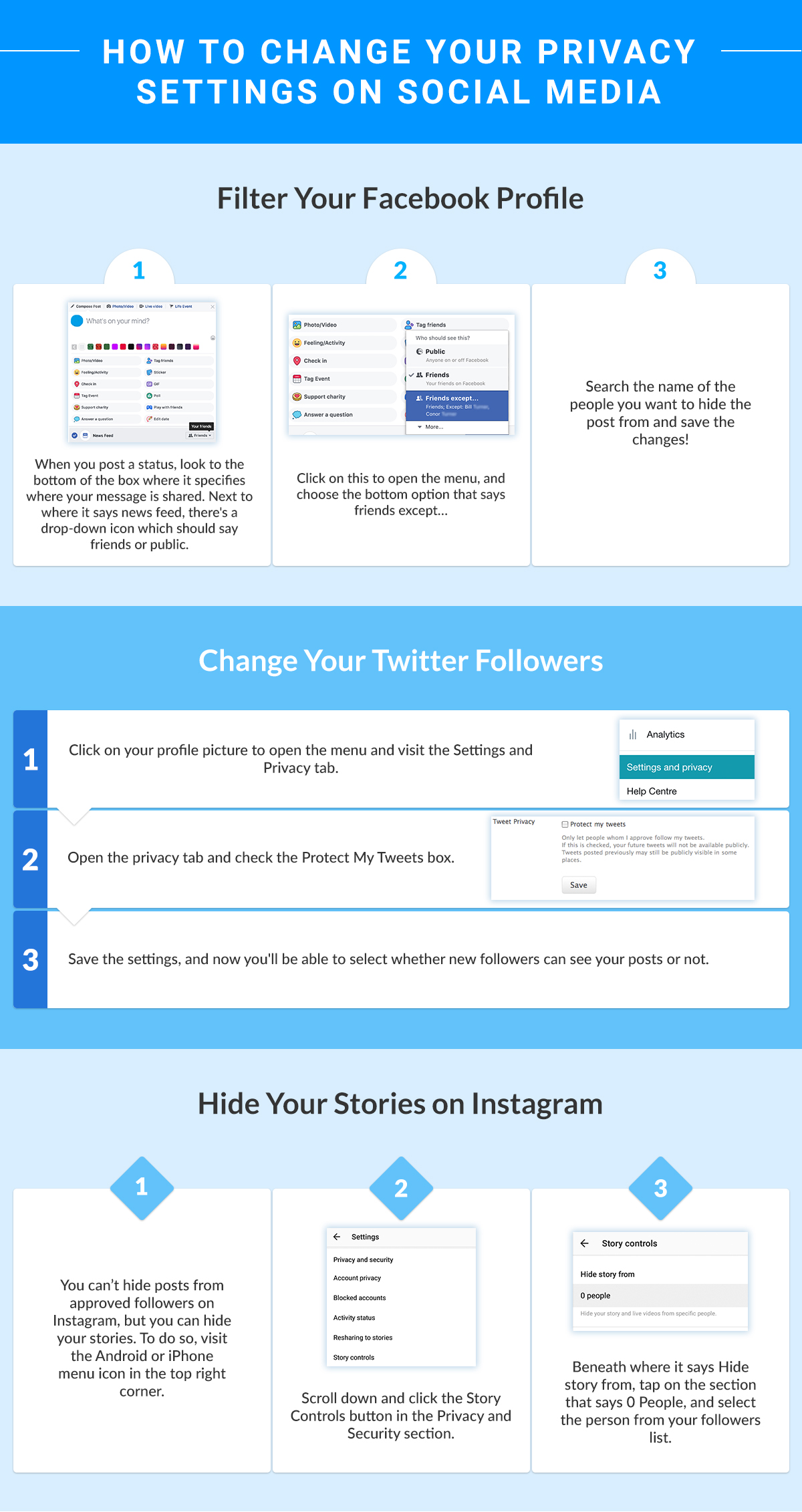
Combating Harassment & Prejudice at Work
If you experience harassment or discrimination at work, it can be emotionally overwhelming. Especially with everything online nowadays, you might experience online harassment from your coworkers. However, that doesn’t mean you can’t get recourse. Here’s where to start:
Document every relevant interaction and collect evidence to take to HR or your lawyer.
Use your phone to record potentially problematic conversations, so you have first-hand proof of what happened.
If any evidence exists within your work email correspondence, be sure to copy and paste or screenshot the content elsewhere – because your employer can delete or edit messages that exist within the company’s internal system. This applies to Slack or other online chat groups as well.
Find someone you trust to help gather documentation. Having a witness will increase the credibility of your claims.
If HR doesn’t take your accusations seriously, find a third-party you can contact to push the case further.
Know your rights. Being able to refer to specific legislation and guidelines regarding discrimination will help you go to battle with confidence.
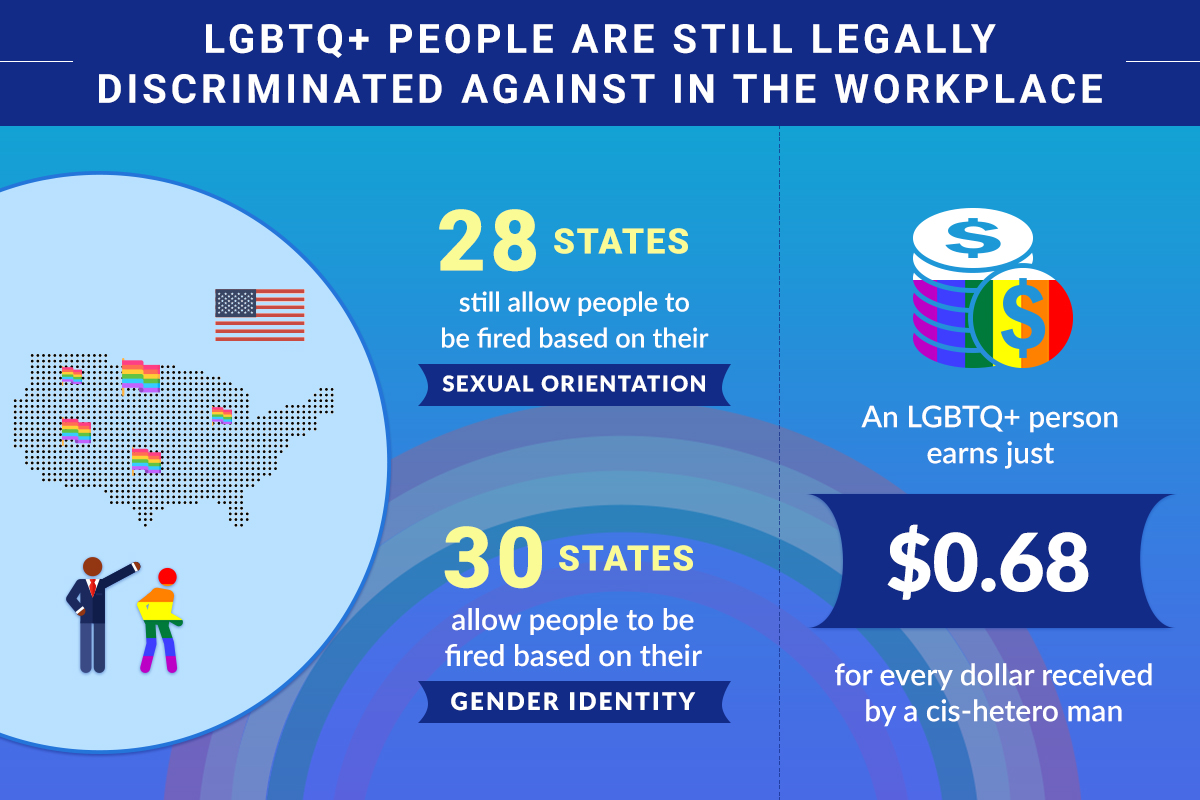
Tips for Parents of LGBTQ+ Youth
If you are the parent of an LGBTQ+ child, it’s essential to verse yourself in online safety.
Queer youth are especially vulnerable to abuse and depression, mostly because they have less of an ability than adults to organize their lives around finding a supportive community.
It is important to stay involved in your child’s life and be aware of their mental health. By maintaining an open dialogue and monitoring their online activity, you can help keep them safe.
Similarly, if you discover that your child is queer but has not disclosed that information to you, it is important that you do not confront them about it. Instead, have an open dialogue and incorporate statements about the LGBTQ community that will help your child feel safe.
Talk to them, but more importantly LISTEN. Ask what help they need and what tactics they’re using to protect themselves online. Many resources exist to support LGBTQ youth and their parents, so feel free to reach out and connect with others.
Below is a list of organizations that offer a plethora of resources for LGBTQ youth and their loved ones.
Support Organizations for LGBTQ+ Youth and Their Families
It Gets Better: Created by married couple Dan Savage and Terry Miller, It Gets Better started as a social media campaign to provide hope for young LGBTQ+ people who face bullying and prejudice. Today it is an international media network with numerous partners.
GLAAD: GLAAD was founded in response to the slanderous coverage of the 1980s AIDS epidemic. Today, it plays a major role in tackling problematic media narratives and encouraging essential conversation about LGBTQ+ issues.
Born This Way: This foundation was created by Lady GaGa and her mother, following the success of the song of the same name. The organization aims to support and empower young people through research and by connecting them to mental health resources.
FFLAG: Standing for Families and Friends of Lesbians and Gays, this registered nonprofit’s primary focus is supporting and sharing information with the friends and family of LGBTQ+ people. In addition to providing resources, they also connect members with local groups and contacts.
Helpful Blogs & Forums You can also find an infinite number of blogs and forums that are used to discuss problems and share personal experiences. Popular blogs for LGBTQ+ youth and their parents include:
Gay Christian Network Forum
Transparenthood.net
Parentingjeremy.com
Raisingmyrainbow.com
Exploitive Relationships Among LQBTQ+ Youth
Studies show that LGBTQ+ youth are presented with more relevant risk factors than any other group of young people.
Often this occurs when children or youth come from homophobic/transphobic families that don’t give them the support they need and deserve. Young people who are forced to stay in the closet due to fears of backlash from their parents are particularly at risk of sexual extortion.
“When I was younger, and the internet more ruthless, I had a man threatening to come to my house to tell my parents unless I sent him pictures,” recounts Giselle, an asexual transgender woman. “I had [nowhere] to go and thought that some stranger was going to tell my parents everything.”
In extreme (though unfortunately not uncommon) cases, youth without familial support end up homeless and often are forced to turn to sex work as their only means of survival. According to Gil Fishhof, the Director of the Human Rights Youth Organization: “these kids are engaging in sex as a means of acquiring the basic necessities that we take for granted like food, clothing, and shelter.”
And even those who don’t engage in sex work can be vulnerable to exploitation from adults who seek to establish a ‘sugar daddy/mommy’ relationship with someone who is young and easily manipulated. In explaining some of the potential reasons why young people who identify as LGBTQ+ might fall into unsavory relationships, Fishhof says, “youth are less likely to say no in these situations because they feel like they need to validate their sexual identities. It creates a fertile ground for sexual assault.”
In these situations, the responsibility falls to parents and caregivers to keep a watchful eye on the young people they care about. It’s particularly important to keep an open dialogue about internet use and ensure that minors stay away from the adult dating community.
The following are all 18+ apps that those who are underage shouldn’t be on:Tindr
Grindr
Zoosk
HER
Hotornot
Badoo
Skout
If your child or a young person you care about is using one of these apps, have a conversation with them, and make sure they understand the risks of getting intimate with adults.
That said, while open and honest dialogue is always the best option for teaching your child about safety, if you think it necessary and have the ability to do so, you could also block their usage of these apps entirely.
One way to do this is by using parental control software.These let you block apps, as well as track activity and messages. They can be as intrusive or unobtrusive as you want them to be, so you can find the balance between respecting your child’s privacy and keeping them safe.
The following are all highly-rated parental control programs:
Norton Family Premier: Available by itself or as an extension to the Norton Security Suite, this control app allows you to set ‘house rules’ for each device. These can determine time limits, app restrictions and under 18 filters.
FamilyTime: FamilyTime is available on most operating systems and allows you to monitor and manage your kid’s web use – giving you access to phone logs and location, and letting you block apps and implement geofencing.
Qustodio: This option allows you to set individual time limits for each app, or block them completely. It’s also simple to monitor your child’s texts and calls through the admin panel.
Net Nanny: Net Nanny is an award-winning software that offers real-time analytics, and that monitors activity and prevents users from accessing age-inappropriate content.
Pumpic: Targeting mobiles specifically, Pumpic gives you remote access to your child’s device, and the ability to block or moderate the content they see. It provides logs of their activity, calendar, contacts, and messages.
We Hope This Helped In a perfect world, LGBTQ+ people wouldn’t face a heightened risk online and would be free to express themselves however they wish. Sadly, social norms aren’t changing fast enough, and we still have a long way to go before that reality is realized. Unfortunately, this means that LGBTQ+ people have to be extra careful, especially online.
We hope our guide helps you take control of interactions online and makes you feel safer, while at the same time empowering you to fully enjoy the digital aspects of your personal, intimate, and professional life.
*All names have been changed to protect individuals’ privacy.
**For the purposes of our survey, the categories bisexual and pansexual were combined.
***For the purposes of our survey, the categories genderqueer and non-binary were combined.
Appendix
Harassment Online
Respondents were asked, “Have you ever been personally attacked or harassed online?”
Answer Result
No 27%
Yes 73%
Sexual Harassment OnlineRespondents were asked, “Have you ever received unwanted sexual texts/messages/pictures/advances online?”
Sexual Orientation Result
Asexual
No 57%
Yes 43%
Bisexual/Pansexual
No 50%
Yes 50%
Gay
No 49%
Yes 51%
Lesbian
No 51%
Yes 49%
Queer
No 41%
Yes 59%
Safety by Sexual OrientationRespondents were asked, “In general, how safe do you feel online? Answer on a scale of 1-5, with 5 being ‘very safe’ and 1 ‘not at all safe.’”
Sexual Orientation Number of Respondents Average Response
Asexual 37 3.49
Lesbian 138 3.50
Queer 58 3.52
Bisexual/Pansexual 248 3.56
Gay 112 3.63
Straight 4 3.75
Total 597 3.552763819
Safety by Gender IdentityRespondents were asked, “How safe do you feel online? Answer on a scale of 1-5, with 5 being ‘very safe’ and 1 ‘not at all safe.’”
Gender Identity Number of Respondents Average Response
Transgender Woman 23 3.217391304
Transgender Man 43 3.441860465
Genderqueer/Non-binary 116 3.50862069
Cisgender Woman 276 3.565217391
Cisgender Man 138 3.65942029
Total 596 3.553691275
Outing by Gender IdentityRespondents were asked, “Have you ever been outed against your will online?”
Sexual Orientation Result
Cisgender Man
No 89%
Yes 11%
Cisgender Woman
No 88%
Yes 12%
Genderqueer/Non-binary
No 84%
Yes 16%
Transgender Man
No 79%
Yes 21%
Transgender Woman
No 74%
Yes 26%
SOURCE:



